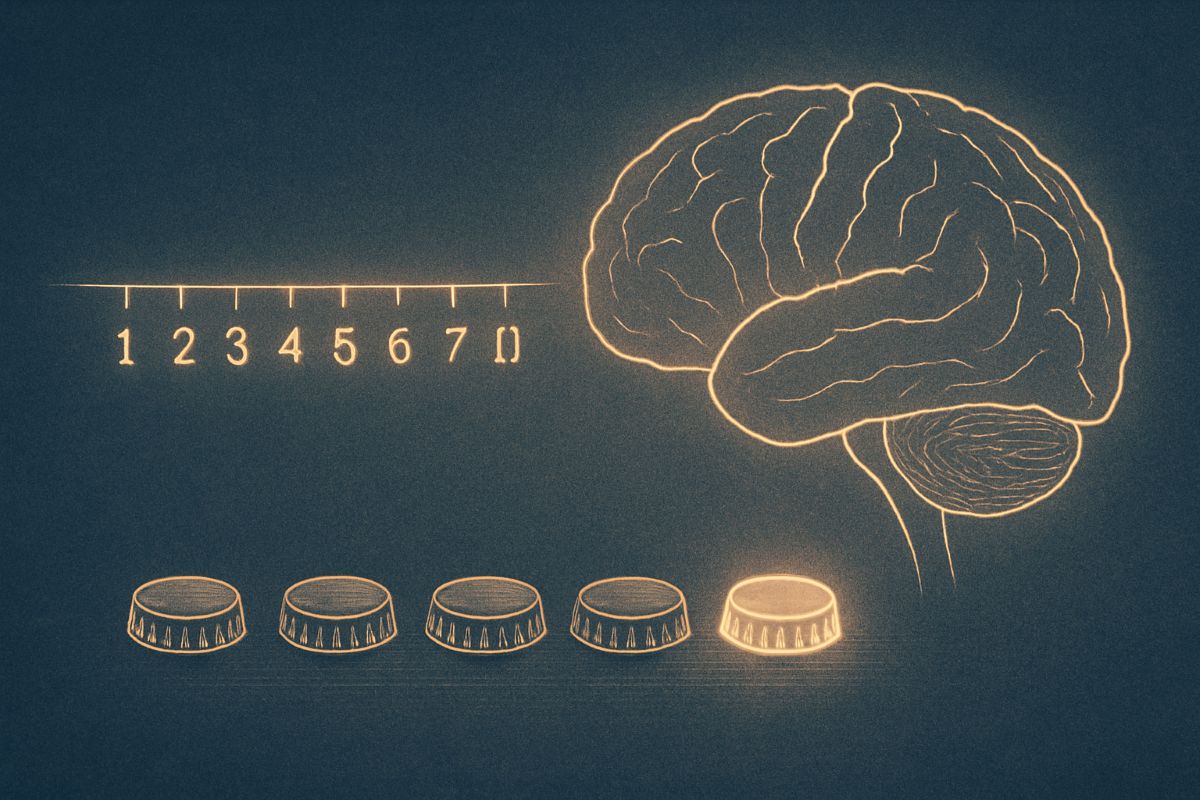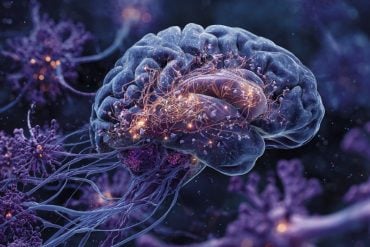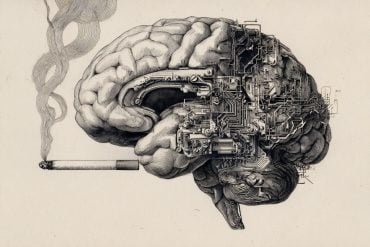Summary: A study in newborn chicks shows that brain lateralisation is essential for the development of a left-to-right mental number line. Chicks with strongly lateralised brains consistently mapped numbers from left to right, while weakly lateralised chicks did not display this pattern.
The findings provide the first direct evidence that lateralisation drives spatial–numerical associations, suggesting our sense of numbers may be biologically grounded rather than purely cultural. This research deepens our understanding of cognitive development and could shed light on why numerical reasoning differs across individuals.
Key Facts
- Direct Evidence: Brain lateralisation is necessary for left-to-right numerical mapping in chicks.
- Light Exposure Effect: Embryonic light exposure boosted lateralisation and enhanced numerical–spatial performance.
- Biological Basis: The study suggests number–space associations are innate, not just culturally learned.
Source: eLife
Lateralisation of the brain – the tendency for the left and right hemispheres to specialise in different functions – underlies the development of a left-to-right mental number line, according to a study in newborn chicks.
The study, published as a Reviewed Preprint in eLife and appearing today as the final version, is described by the editors as fundamental. They say the evidence presented is compelling and the results will be of interest to researchers studying numerical cognition, brain lateralisation, and cognitive brain development more broadly.
Many people intuitively think of numbers as arranged along a mental line, either running from left to right, with smaller numbers on the left and larger on the right, or vice versa. This representation – often called the mental number line – is traditionally thought to develop through cultural experience, especially through reading and writing direction.
However, research has shown evidence of a left-to-right mental number line in young infants and animals, challenging this assumption and suggesting that this spatial-numerical association may have biological roots.
Brain lateralisation, also known as hemispheric specialisation, refers to the idea that the two hemispheres of the brain are functionally different and have specialised roles in various cognitive processes.
“Embryonic light exposure induces brain lateralisation in domestic chicks, and enhances their spatial-numerical abilities and their tendency to ‘count’ from left to right,” explains lead author Rosa Rugani, a Professor in the Department of General Psychology, University of Padua, Italy.
“Although several models have proposed that the mental number line originates from brain lateralisation, direct evidence has been lacking. Our study provides this evidence, showing that lateralisation is essential for the emergence of left-to-right spatial-numerical associations.”
In domestic chicks, light exposure during embryonic development is known to promote brain lateralisation. Therefore, Rugani and colleagues incubated 100 chick eggs, half exposed to light and half kept in the dark. This produced a group of strongly lateralised chicks, and a group of weakly lateralised chicks.
After hatching, the chicks were trained to locate food hidden behind the fourth bottle cap in a vertical row of 10 identical caps. Once they had learned this task, the team rotated the array of feeders by 90 degrees so that it was horizontal and tested whether the chicks would search for food in the fourth cap from the left or the right. Both caps constituted a plausible choice, allowing the researchers to observe any natural directional preferences.
Strongly lateralised chicks showed a clear preference for selecting the fourth cap from the left, suggesting a left-to-right number mapping. In contrast, weakly lateralised chicks showed no consistent directional preference, selecting at random between the two caps.
The researchers then repeated this test while covering either the chicks’ left or right eye. Because each eye primarily sends signals to the opposite hemisphere of the brain, this allowed the team to determine which hemisphere was processing information during the experiment.
When chicks used only their left eye (engaging the right hemisphere), those with strongly lateralised brains again chose the fourth cap from the left more frequently, reinforcing the role of the right hemisphere in integrating spatial and numerical cues. When these same chicks used only their right eye (engaging the left hemisphere) they tended to choose the fourth cap from the right instead.
The weakly lateralised chicks failed to solve the task in both monocular conditions. This suggests that brain lateralisation, established through light exposure during the last days of embryonic development, is essential for integrating spatial and numerical cues, and boosts cognitive performance.
In a follow-up experiment, the researchers tested how the chicks would perform if the spatial cues were made unreliable. They changed the spacing between the caps so that the physical position of the fourth cap varied – meaning the chicks could only rely on ordinal (numerical) information, not spatial layout, to locate the food. Under these conditions, neither strongly nor weakly lateralised chicks showed a directional preference.
“For the first time, we show that brain lateralisation is not just related to the mental number line – it’s necessary for it,” says Rugani.
“This finding brings strong experimental support to the idea that our sense of number and space is biologically grounded, yet shaped by an individual’s interaction with the environment.”
The authors suggest that a natural left-to-right scanning pattern may have evolutionary advantages for chicks. For example, when foraging it may allow them to efficiently locate and quantify food sources without overlooking areas.
“Our work demonstrates that lateralised brain function plays a key role in shaping how animals, possibly including humans, think about numbers,” says senior author Lucia Regolin, a Professor in the Department of General Psychology, University of Padua.
“Understanding the biological basis of numerical thinking may help us identify why certain cognitive abilities emerge when they do in development, and why they might be altered in individuals with atypical brain organisation.
“This research opens the door to further studies on the developmental origins of numerical reasoning, and how early sensory experiences can influence later cognitive outcomes.”
About this numeracy and neuroscience research news
Author: Emily Packer
Source: eLife
Contact: Emily Packer – eLife
Image: The image is credited to Neuroscience News
Original Research: Open access.
“Prenatal light exposure affects number sense and the mental number line in young domestic chicks” by Rosa Rugani et al. eLife
Abstract
Prenatal light exposure affects number sense and the mental number line in young domestic chicks
Humans order numerosity along a left-to-right mental number line (MNL), traditionally considered culturally rooted. Yet, some species at birth show spatial-numerical associations (SNA), suggesting neural origins.
Various accounts link SNA to brain lateralization but lack evidence. We investigated brain lateralization effects on numerical spatialization in 100 newborn domestic chicks.
In ovo light exposure yielded strongly lateralized brains in half the chicks and weakly lateralized in the other half.
Chicks learned to select the 4th item in a sagittal array. At the test, the array was rotated 90°, with left and right 4th items correct.
Strongly lateralized chicks outperformed weakly lateralized ones when ordinal and spatial cues were reliable (experiment 1), but not with unreliable spatial cues (experiment 2).
Moreover, only strongly lateralized chicks showed left-to-right directionality, suggesting the right hemisphere’s key role in integrating spatial and numerical cues.
We demonstrate that brain lateralization is fundamental for developing a left-to-right oriented SNA.







